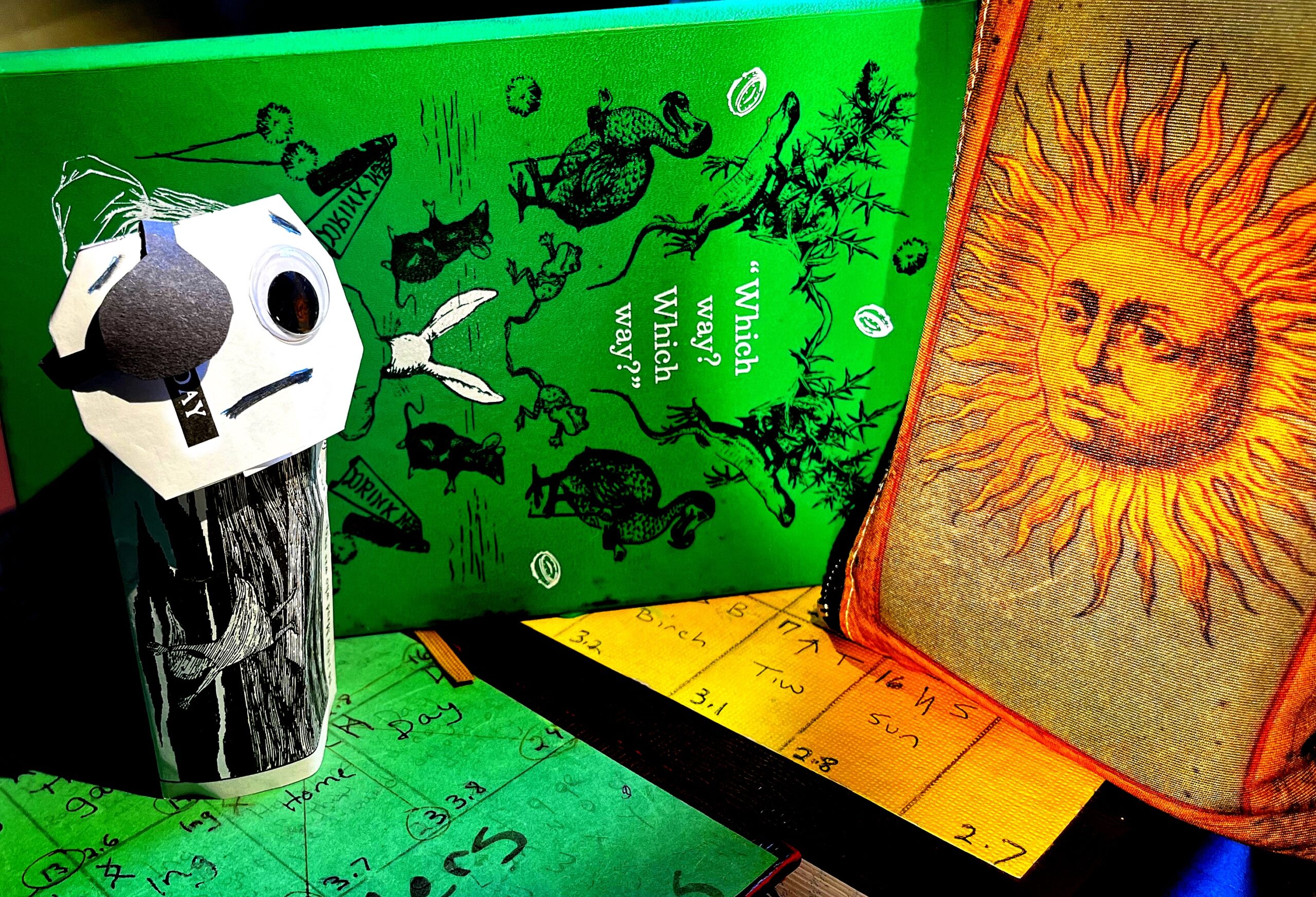 I do not advise navigating by the sun. It’s a mathematical mess with all parts in motion, the sun, the sea, you. Pure chaos. If you must get in a boat, stick to the coastline where you can see landmarks, read the marine life, always the same fish in the usual places, watch the birds.
I do not advise navigating by the sun. It’s a mathematical mess with all parts in motion, the sun, the sea, you. Pure chaos. If you must get in a boat, stick to the coastline where you can see landmarks, read the marine life, always the same fish in the usual places, watch the birds.
If you have to cross the open sea do it at night, when you can travel by nice comfortable starlight. The stars are dependable, they never deceive, but the sun will burn you the first chance it gets. It’s shifty, you can’t trust it, not unless you know it really well. Look at it right now. Don’t look at the sun. Remember where it was yesterday? It’s shifted its position along the horizon. it does it every day all year long, and not uniformly. Its movements vary depending upon your longitude and the time of year. If you are moving too, with the sun as your guide you will have to know when you are in order to know where. Still. If you insist on traveling by day, the sun might well be your savior.
Start with the dawn. Where is the sun rising? What day is it today? If you are watching the sun come up during an equinox, you are looking east. Don’t look at the sun. If you are looking at the rising sun during the summer solstice, the sun is 45 degrees away in the northeast from the spot where it was during the equinox and you are up far too early. Go back to bed. The sun rises in the southeast during the winter solstice and long past the start of morning. What are you doing at sea in the dead of winter? Shouldn’t you be sleeping in? You have poor travel planning skills. Go home.
Pay attention to the sun on equinox days. Stand in the same spot and see where the sun is rising. Put a monument there to help you remember. This is the middle of the sun’s road; middles are important. Now tomorrow, and every day, go back to the same spot and look at the sun. Don’t look at the sun. The sun moves by approximately twice its diameter every day. Approximately. It will move farther along each day the closer to the pole you get. Also, the nearer to an equinox. It won’t shift as far along the horizon if you are closer to the equator or to the time of a solstice.
With these kinds of variables, to know your position in latitude you must be strictly accurate with your day counting. Keep a good calendar and learn what the sun does in your home port before you travel. Make a portable calendar. Find a straight stick, stand at your monument and hold it at arm’s length in front of your face toward the rising sun. Cut it so each end appears to touch the ends of the sun’s road to the solstices. These the two spots on the horizon where the sun stops, stays in the same place for a couple of sunrises, then turns around and goes back the other way. Carve the sun’s morning horizon position into your stick each day after that until it gets to the other end. Then carve Tiw’s name or Ing’s into it, either would work, they are both on a journey, and bring it with you when you go. If you settle in a new place you can compare where the sun is on the same day to where it would be at home and you can know if you are north or south of your home latitude, and approximately how far.
Approximately. And nothing I’ve told you will work at all at sea. If you’ve changed your latitude, and you have, the length of the sun’s road along horizon will be different, and you won’t have any idea where the ends are to look for daily differences. To determine how far you’ve gone in latitude at sea, forget looking at the sun at dawn, don’t look at the sun, you’ll need to look at the sun at midday. To find midday, point your stick straight up and watch its shadow. Or use the mast of your boat if it has one as it is fixed in place. When the shadow is shortest, the sun is at its highest point in the sky. The shadow it forms at this time will point perfectly north and south no matter where you are in the world. At minimum, you can use this to find direction whatever day it is, though you will need more than the minimum or be lost forever at sea, exiled in wretchedness, no chance for return.
Before you leave, fit your calendar stick with a short crosspiece, nice and straight, you can slide up and down. At midday, hold your stick under your eye outward from your face and line up the cross piece so that one end of it appears to touch the horizon, and the other touches the sun, don’t touch the sun, and mark that spot on your stick. This spot is home. Every midday while you are at sea, do it again, look at the sun, don’t look at the sun, and line up the crosspiece, sun on one end, horizon on the other. The sun will appear closer to the horizon at midday the farther north you go in latitude, higher in the sky if you are going south. But remember the day, you’ve got a calendar on your stick so use it because the sun is shifting, moving enough to mean big differences if you are trying to draw straight lines across the open sea. An angle of 2 degrees can be miles away from your destination, if you draw the line far enough, and you are going far. The sun is shifty and you are shifting too, your position north and south. And if the sky is overcast? If your boat is tossed by a storm and your sea horse has lost its bridle? If it is always cloudy at night and you can never see the stars? Then you need the sun, though it has taken your vision from one eye and is working on the other. I told you don’t look at the sun. The sun wants you blind. Still, you should try to see past that. You must overlook the sun’s rage. You must always hope for the sun or you will be lost.



